The best way to grow a small business is through digital marketing. Digital marketing can help you reach and connect with your potential customers in various online channels.
The problem is there are many channels and a lot of tasks to complete to run successful online marketing campaigns and it’s easy to lose track of what is important to do.
That’s why we created the complete digital marketing checklist. Our marketing checklist includes all the important tasks you need to complete to ensure that you are taking full advantage of digital marketing to grow your business.
So, if you want to learn how to use digital marketing to boost your online presence, you’ll love this list.
Digital Marketing Checklist for Small Businesses
- Understand what is digital marketing
- Choose your online marketing channels
- Get a digital marketing certification
- Review your website design
- Optimize your website structure
- Optimize your website for SEO
- Optimize your website for conversions
- Evaluate your website’s performance
- Learn SEO Basics
- Optimize your website for Technical SEO
- Optimize your website for On-Page SEO
- Optimize your website for off-page SEO
- Perform an SEO Audit
- Explore all available paid advertising channels
- Let machine learning and AI do the hard work
- Optimize your PPC campaigns by running A/B tests
- Understand what is content marketing
- Identify what content your target audience needs
- Match Content with Each Stage of the Customer Journey
- Create a realistic content marketing plan
- Create SEO friendly Content
- Distribute your content on all possible digital marketing channels
- Publish thorough content based on research or statistical analysis
- Go back and update your existing content
- Understand what is email marketing
- Create an email marketing strategy
- Optimize your emails
- Create business pages in all available social media networks
- Optimize your social media pages
- Increase your social media followers
- Update your social media pages on a regular basis
- Create a social media marketing strategy and plan
How to use the online marketing checklist?
The best way to use this list is to go through the items one by one and find out which ones you need to add to your digital marketing strategy.
Online businesses have different goals and not all items may be applicable to your case. For each item added in your list make sure that you explore it in detail to learn exactly how you can use it for your advantage.
Each list item has a “resources to learn more” section to help you accomplish this task.
For ease of reference, you can also browse the checklist by digital marketing discipline:
- Digital Marketing Basics Checklist
- Website Marketing Checklist
- Search Engine Optimization Checklist
- Paid Advertising Checklist
- Content Marketing Checklist
- Email Marketing Checklist
- Social Media Marketing Checklist
Digital Marketing Basics Checklist
If you are new to digital marketing, the first thing to do is to get to know the basics. You need to understand what is digital marketing and how the different components of internet marketing work.
Understand what is digital marketing
The definition of digital marketing is simple. Digital marketing is the process of marketing on the Internet. It’s a general term that includes using one or more online channels for marketing purposes.
The most important online marketing channels are website marketing, search engine marketing, pay-per-click advertising, content marketing, email marketing, and social media marketing.
Resources to Learn More
- Digital Marketing Articles – Weekly articles on digital marketing related topics and disciplines.
- Digital Marketing Manager – What does a digital marketing manager do and how to become one.
- Digital Marketing Tips – 20 Tips for Online marketing tips success.
Choose your online marketing channels
Digital marketing has a number of channels that can be used to promote products or services. The channels are grouped into two main categories: online marketing channels and offline marketing channels.
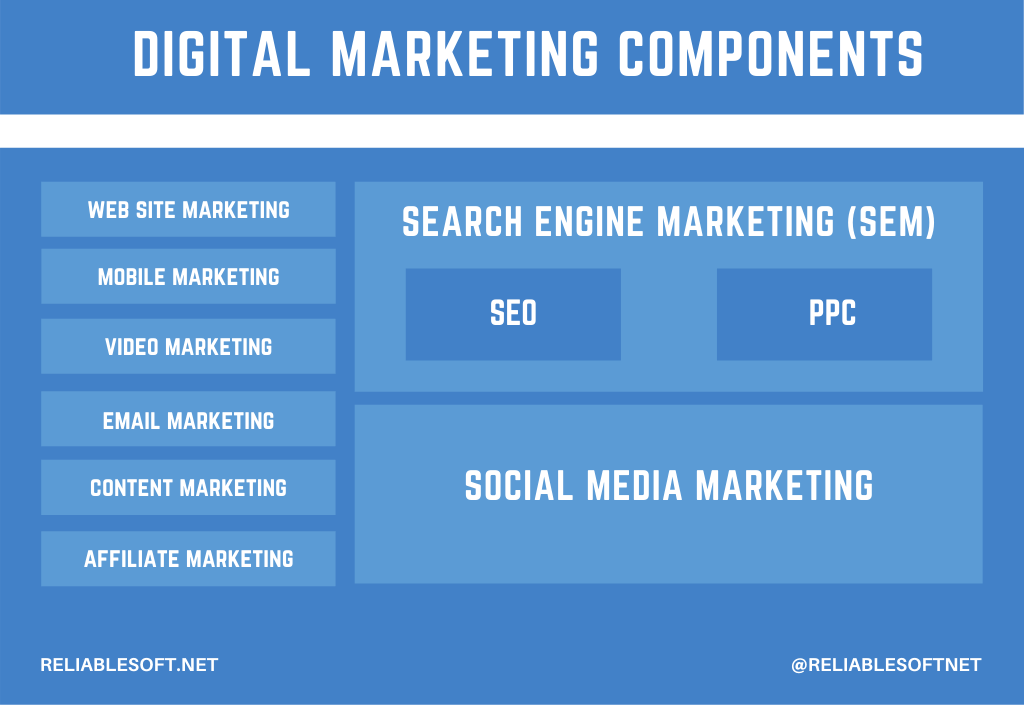
When planning your digital marketing campaign, you need to decide which channels to use. You don’t have to use everything but those channels that are suited for your niche.
The most commonly used channels applicable for all businesses are SEM (includes SEO and PPC), content marketing and social media marketing.
Digital marketing VS social media marketing – Understand the difference between these two disciplines and learn how to use them correctly.
Get a digital marketing certification
This step is optional but highly recommended.
You don’t have to become a digital marketing specialist in order to practice digital marketing but going through the process of getting a digital marketing certification will help you learn digital marketing the proper way.
There are a number of great digital marketing courses (both free and paid) that can teach you the principles of online marketing and take you through all the techniques you can use to promote your brand and market your products or services online.
If you are a small business owner you can use the knowledge to run your own campaigns or to better manage the digital marketing agencies you work with (in case you outsource digital marketing).
If you are a freelancer, you can use the certification to boost your digital marketing career.
Whatever the case, getting proper training can only benefit your business and your personal development.
Website Marketing Checklist
The focal point of a digital marketing campaign is your website and this is your starting point. You need to review your website marketing and make sure that is aligned with your digital marketing goals.
Review your website design
The first check you need to make is to review your website’s design to make sure that:
It accurately represents your brand – At the core of digital marketing is building and promoting online brands and to do this, you need a website that represents your brand, company culture, and vision.
It’s easy to use and fast – Modern websites should be very easy to use and load fast on all devices. Websites with a simple design without unnecessary clutter always work best.
It has a clear description of your products, services or offerings – Don’t forget that the primary reason you have a website is to use it to educate/inform users about your products or services, so make sure this information is easy to find on your site.
Optimize your website structure
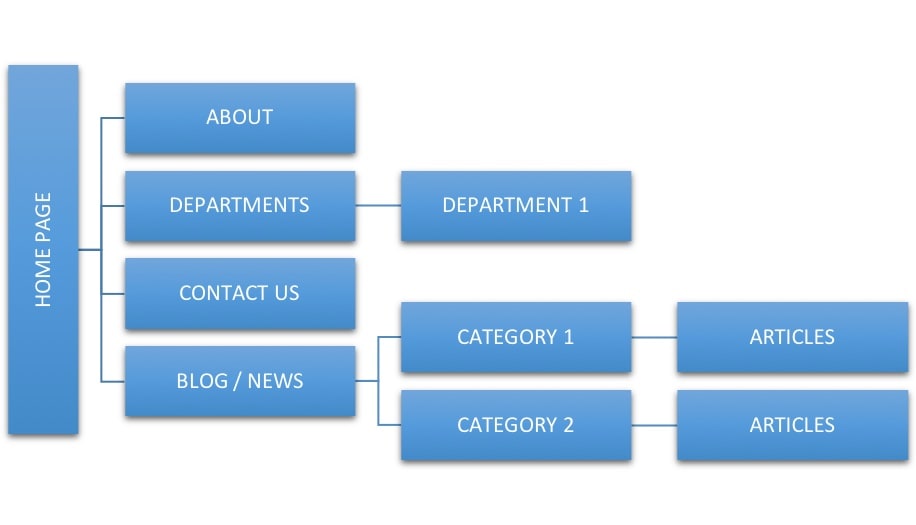
One of the checks to make to ensure that your website design is ‘correct’ is to optimize and review your website structure.
An optimized site structure will ensure that information is properly organized for both users and search engines and this will generate a number of benefits including more organic traffic and conversions.
Optimize your website for SEO
Having an SEO optimized website is not optional but a critical factor for the success of any digital marketing campaign.
As you will read below, search engine optimization is not just about making your website friendlier to search engines but it’s about making the whole user experience better.
Optimize your website for conversions
The primary goal of any marketing campaign is to generate conversions. Conversions can mean different things for different businesses but what is common is that you need to optimize your website for conversions.
For example, if your goal is to increase sales, you need to work on optimizing your product pages, checkout process, give users various payment options, make the website secure, etc.
If your goal is to increase your email list, you need to ensure that users can find easily how to sign up for your list and give them some benefits for doing so.
The scenarios are a lot and it’s your job to define your conversion goals and work on conversion optimization.
Landing Page Optimization – How to optimize your landing pages for SEO and conversions.
Evaluate your website’s performance
One of the nicest things about digital marketing campaigns is that everything is measurable end to end.
There are a number of metrics to use to evaluate the performance of your campaigns and your website. For the website part you need to ensure that:
- You have Google analytics installed and properly configured
- You have goal tracking enabled
- You know how to read and evaluate google analytics reports and metrics.
Resources to Learn More
- Google Analytics – How to use Google Analytics for SEO (for beginners).
- Best Analytics Reports – The most popular Google analytics reports for digital marketers.
Search Engine Optimization Checklist
SEO is the most efficient digital marketing process that can (almost) guarantee the longevity of an online business. Without SEO it is very difficult to stay in business for many years.
Paid Ads can boost your revenue but it’s search engine traffic that can help you grow and establish your brand in the online world.
Learn SEO Basics
Search engine optimization is the process of making your website friendly for search engines so that they can understand and index your content.
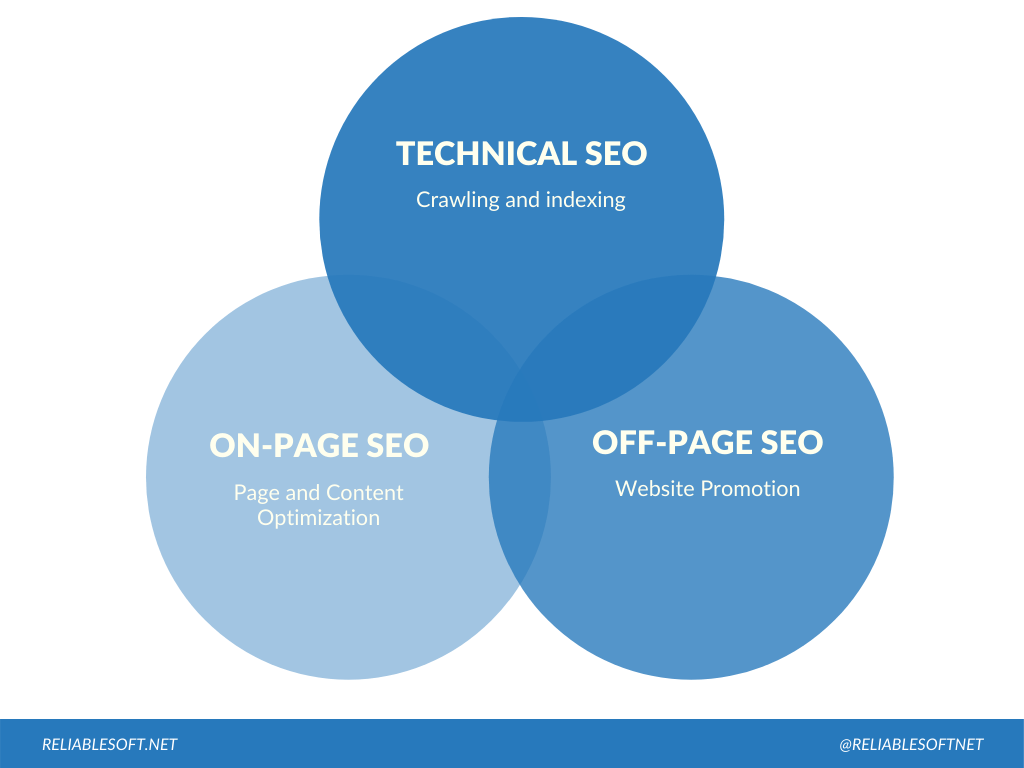
Through SEO you can increase your site’s visibility in Google and get more traffic from search engines.
The SEO process has three main pillars known as Technical SEO, On-Page SEO, and Off-Page SEO. For the best results, you need to make sure that your website is optimized for all three.
Resources to Learn More
- How to become an SEO Expert – a 10 step guide on how to become an expert in SEO.
- Types of SEO – The different types of SEO explained in more detail.
- SEO Checklist – The complete SEO checklist (Epic Guide).
Optimize your website for Technical SEO
Technical SEO is the process of optimizing your website for the crawling and indexing phase.
This is a critical process because technical SEO errors can damage the performance of your campaigns without understanding why.
Things to check and optimize include:
- Proper use of canonical URLs
- txt optimization
- URL Optimization
- Structured Data Markup Implementation
- Fix crawl and indexing errors
- Fix Soft 404 errors
- XML Sitemap Optimization
- Website Security (SSL)
Technical SEO Guide – A complete guide on how to fully optimize your website for technical SEO.
Optimize your website for On-Page SEO
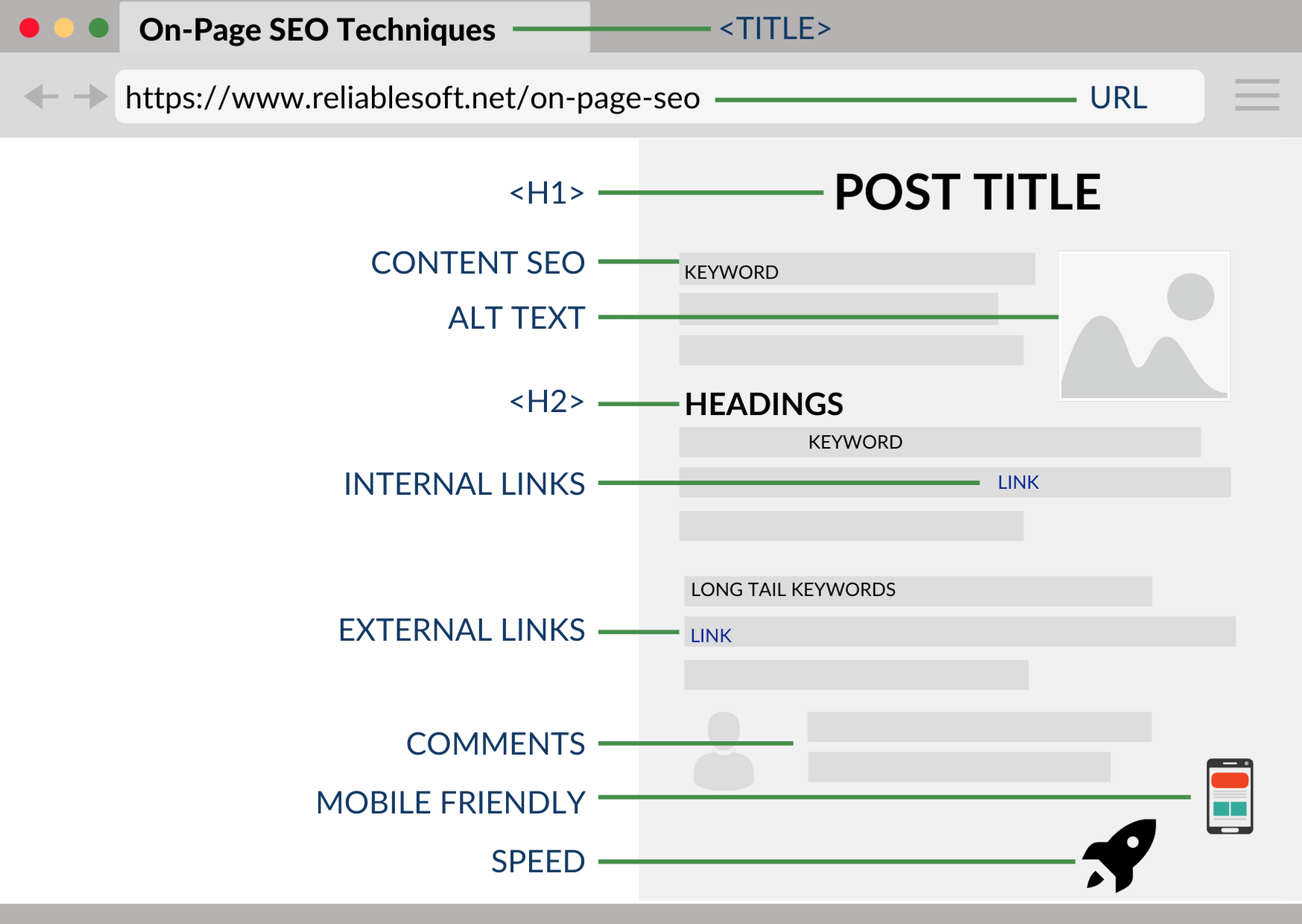
On-Page SEO is the process of optimizing your content for search engines. On-page SEO techniques help search engines understand both the meaning and context of your content and this can have a positive effect on your rankings.
Things to optimize as part of on-page SEO include:
- Optimizing your page titles and meta descriptions
- Optimizing your headings
- Content formatting
- Image Optimization
- Optimizing internal linking
On-Page SEO Guide – A step-by-step guide on how to optimize your website for on-page SEO.
Optimize your website for off-page SEO
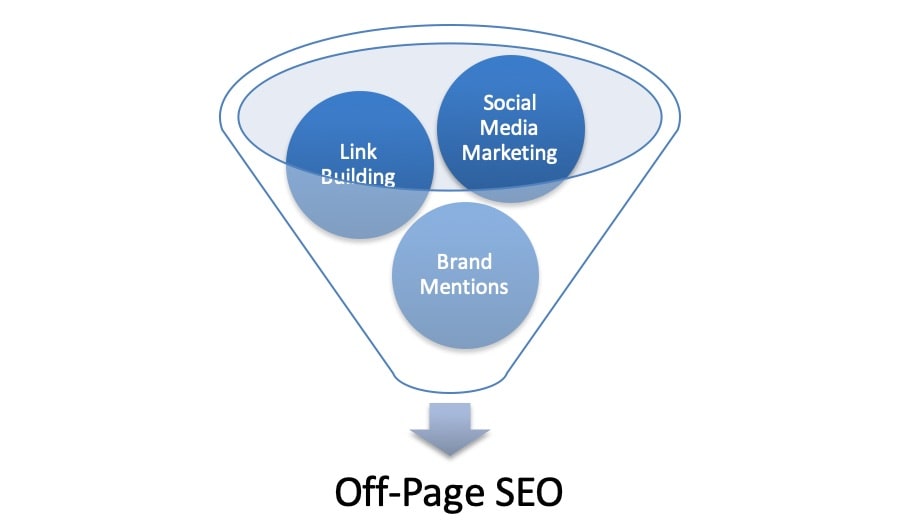
Off-page SEO has to do with activities you can perform outside the boundaries of your website for promoting your website and content on the Internet.
The most important off-page SEO tasks are:
Link Building – The process of getting links from other websites that can positively influence your search engine rankings.
Social Media Marketing – The process of promoting your website and content on social media networks.
Brand Mentions – The process of making your brand known of the Internet with the purpose of getting mentions with or without links.
Off-page SEO is a great way to establish EAT (Expertise – Authority – Trustworthiness).
Perform an SEO Audit
A recommended step to ensure that your SEO is in good standing is to perform an SEO audit. An SEO audit will tell you what’s wrong with your website’s SEO and how to fix it.
There are various ways and tools to perform an SEO audit but the best method is the manual method.
A manual audit is more effective since an experienced SEO expert can give you advice based on real-life experience and best SEO practices that no tool can provide.
SEO Audit Guide – A thorough guide on how to perform an SEO audit of your website (with a checklist).
Paid Advertising Checklist
Paid advertising is one of the fastest ways to make sales online. It is the recommended channel for startups and for a business that needs results fast. Optimized paid ads can generate revenue and profit for businesses until SEO and other digital marketing techniques become ready to contribute to growth.
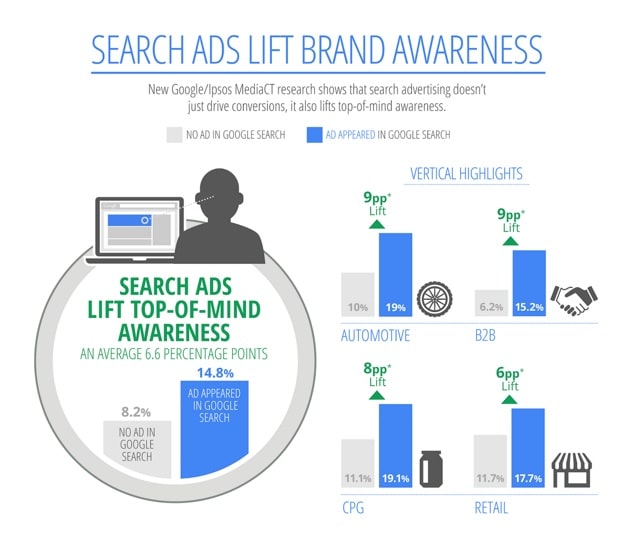
Explore all available paid advertising channels
Paid Advertising is a huge chapter in digital marketing. There are so many platforms you can use to place your ads in front of your target audience and for best results, you need to explore and test as many as possible.
The most commonly used paid advertising channels are:
- Google Ads
- Facebook Ads
- Instagram Ads
- YouTube Ads
- Bing Ads
- Twitter Ads
- LinkedIn Ads
Add in your checklist to run pilot campaigns in these networks and evaluate the results.
Depending on your products and services some channels may work way better than others and the only way to find out is to test them.
Let machine learning and AI do the hard work
All major advertising platforms now use machine learning and AI to display the right ads to the audience most likely to convert.
Google Ads has introduced automated bidding options, dynamic ads (without having to specify keywords, etc.) and you need to make sure that you take advantage of all these options to optimize the performance of your campaigns.
Machine Learning 101 – Everything a digital marketer needs to know about machine learning.
Optimize your PPC campaigns by running A/B tests
One of the core principles of running profitable PPC campaigns is continuous A/B testing.
When optimizing a PPC campaign (in any platform), you need to keep testing ad messages and types, bidding options and audience targeting, device targeting and a lot of other features to ensure that your campaigns are fresh and relevant for your users.
Content Marketing Checklist
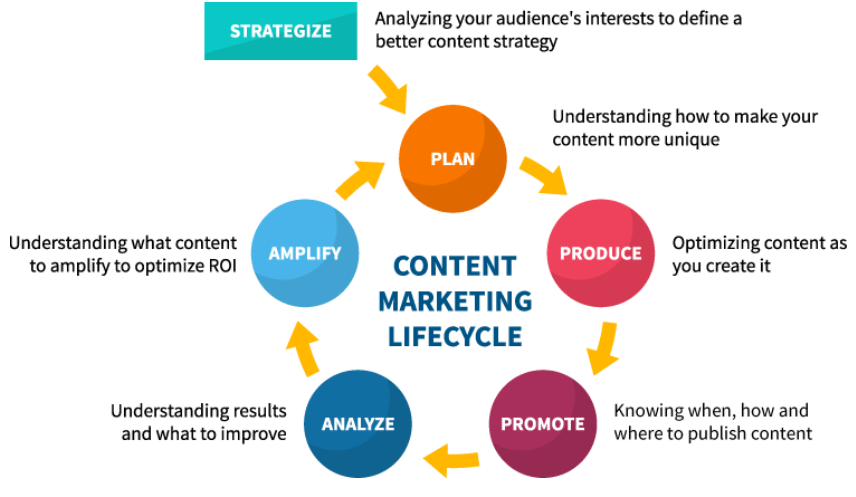
For SEO, paid advertising, email marketing, or social media marketing to work, you need to be in a position to create high-quality content on a regular basis and this is what content marketing is all about.
Understand what content marketing is
Content is the driving force behind ANY digital marketing campaign. Whether its ads, posts, podcasts or videos, content is a huge decisive factor for the success or failure of your campaigns.
Content marketing is the process of creating content for the purpose of increasing your web traffic, getting new customers, making more sales or simply increasing brand awareness.
Identify what content your target audience needs
Randomly publishing content is not the way to do content marketing. The first step is to make your research and identify what content your target audience needs and in what format.
Is it text content or video? Do they need step-by-step instructions to carry out a task? Are they looking for an answer to a question? A product to buy?
Once you have the answers you can proceed to the next step.
Resources to Learn More
- Content marketing VS SEO – Understand the relationship between content marketing and SEO.
- Content marketing VS Social media marketing – Understand the difference between content and social media marketing.
Match Content with Each Stage of the Customer Journey
A typical marketing funnel has many stages that resemble the customer journey from the time they search something on the Internet to the time they are ready to convert (make a purchase).
To be successful in digital marketing, you need to have the right type of content for each stage and performing a good keyword research analysis will help you achieve that.
Create a realistic content marketing plan
Once you know what type of content to create and for what topics/keywords, the next step is to come up with a plan to make this happen.
Your content marketing plan should be realistic taking into account your available resources, time and budget.
Good content is one of the most expensive items in a digital marketing campaign and instead of creating an optimistic plan you cannot follow, better create a plan you can execute.
Each piece of content you publish on any internet marketing channel should be considered an asset for your business and campaigns.
Create SEO friendly Content
SEO blog writing is an art that can be master with knowledge and experience. Before you hit the publish button for content that is geared towards organic search, you need to ensure that is great for both search engines and users.
Users like to read content that satisfies their intent and search engines want to index content that it’s easy for them to understand its meaning.
Accomplishing these two concepts together is what makes SEO friendly content.
Distribute your content on all possible digital marketing channels
As mentioned above, creating good content is expensive, and every piece of content you create should be considered an asset. To benefit the most from your content assets, you can distribute them across various channels.
For example, you can convert a blog post into a presentation and share it on LinkedIn or into multiple tweets and share them on Twitter.
Transforming your content into various formats and distribution channels will increase your reach and give you fuel to feed your channels.
Publish thorough content based on research or statistical analysis
There are roughly 4 million blog posts published each day. This is a huge number that is growing rapidly day by day.
To increase your chances of ranking high on Google, getting more social shares and mentions for your brand, you need to make sure that your content is thorough and is based on research, statistical data or your experience and expertise.
It’s not a matter of how many words you publish but what users want to read. Statistics show that long-form detailed content performs better in SEO and the social web.
Go back and update your existing content
Publishing new content targeting new topics/keywords is essential for your digital marketing success but it’s not enough.
You need to frequently revisit your most important content and make sure that is updated and always relevant.
By doing so you increase your chances of:
- Maintaining your existing Google rankings
- Gaining more links
- Re-using your content in social media
Nobody wants to read content that is out-of-date and this includes both search engines and users.
What is evergreen content – learn why evergreen content is the best type of content to publish.
Email Marketing Checklist
Creating a community around your brand and a tribe of loyal followers is the recipe for running successful digital marketing campaigns and email marketing is the medium to do that.
Understand what is email marketing

Email marketing is not dead. Despite the rise of social networks, email marketing is still one of the most effective sales channels.
According to recent stats, it is estimated that there are over 5.6 billion active email accounts, and this number is rising year by year.
As a marketer, you need to understand what is email marketing and how it works. Having a newsletter and sending out a weekly email is not the end of the story.
You need to learn how to get visitors to sign up on your email list, how to use email funnels, how to use list segmentation and many more features to make email marketing work for your business.
Email marketing for small business – The small business guide to email marketing.
Create an email marketing strategy
Having an email marketing plan is the best way to approach email marketing. Your strategy should include things like:
- What incentives to offer to get people to register to your list
- How often to send emails and what type of content to include
- A/B Tests to make to find out what emails/messages generate the best results
- Ways to segment your list based on customer profiling
- How much to invest and the projected ROI?
- What are your email marketing goals? (educate users, make sales, etc.)
Optimize your emails
Email optimization is essential for every email you send out. By email optimization we mean:
- Taking the necessary measures to ensure that your emails will get delivered to the right audience.
- Optimizing your email open rate (the number of people that will open your email).
- Optimizing your click rate (the number of people that will click a link in the email).
Measuring, monitoring and improving the above numbers will help you run profitable email marketing campaigns.
Social Media Marketing Checklist
Running social media marketing campaigns is not optional but a requirement for companies who want to have a present and future in the online world.
Thousands of companies are making money on social media marketing alone and many more are losing money on social media so you need to do it correctly to minimize the risk of failure.
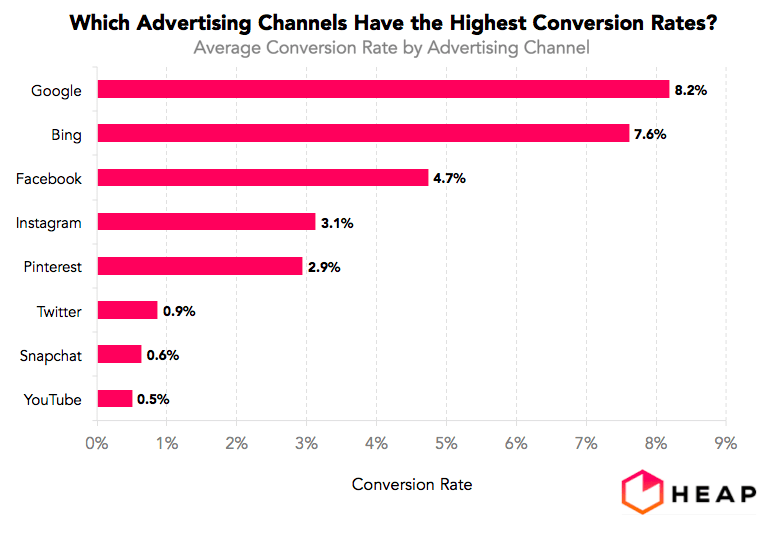
Create business pages in all available social media networks
As a business, it is important to have a presence in all the networks that your audience is using.
All big social networks (Facebook, Instagram, Twitter, LinkedIn), have the option to create a business account and you need to make sure that your brand name is claimed and accurately represented.
The following links will help you get started:
Optimize your social media pages
For all social pages, you create for your business, make sure that it has the necessary information to learn more about your business and your offerings.
A mistake that many businesses make is to create a Facebook page and leave it empty with no content or information. This can do more harm to your business reputation than good.
Increase your social media followers
Social proof is a very powerful tool in digital marketing. It’s a way to establish trust and to convince new users to follow your brand.
People are more likely to buy products from brands they trust than from brands they know nothing about.
There are various ways to increase your social media followers, the most effective methods are:
- Publishing useful content on a regular basis
- Using paid ads
- Offering incentives (running contents, giving prizes, etc.).
How to get more followers on Facebook – A case study on how to increase your Facebook following with paid ads.
Update your social media pages on a regular basis
The date a page was updated is something that many users take into account before making a buying decision.
Before making a purchase, users are likely to search for your brand on Facebook and visit your business page.
If you have outdated posts or a page that looks ‘abandoned’, this can reduce trust and negatively affect their decision.
For best practices, make sure that your social media pages are updated regularly with new content.
This can be content from your blog, news about your products or services, industry news, industry studies, etc.
Create a social media marketing strategy and plan
Updating your social media pages while working on the other digital marketing tasks, can be a big issue for small businesses that have limited resources.
The best way to handle this is to create a realistic social media marketing plan. Your plan should include:
- Your social media marketing goals
- Analysis of your audience personas
- Posting calendar
- Metrics to use to analyze the performance of your campaigns
Social media marketing for beginners – Everything you need to know to get started with social media.
If you’ve made it to this point, congratulations! You should now have a better idea of how to make digital marketing work for your business. If you feel that something important is missing from the checklist, let me know in the comments below.
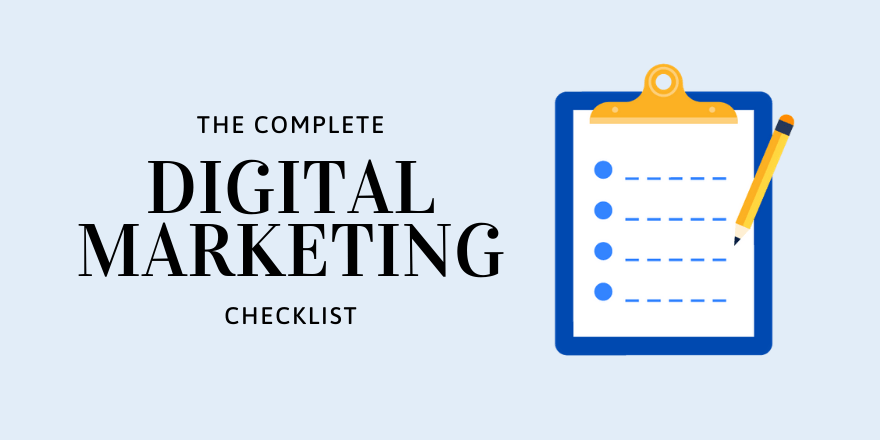



Pretty much all basic things of digital marketing enlisted in this checklist! Thanks for taking your time in putting this together and sharing with us. Bookmarked for future reference.
Hi Alex, what you have shared is a very handy checklist and I am definitely bookmarking this post. I can see you have invested a lot of effort and time in collating this information. I will be sharing this checklist as I’m sure it will be beneficial to them to enhance their Digital Marketing strategies.
Wow amazing article i love the way you explain about digital marketing. It is easy to understand and i will definitely apply this strategies. Thank you for sharing amazing article.
Really interesting and easy to read article, thank you! Couldn’t agree more with your digital marketing checklist for small businesses. A great page for small businesses to create their entire marketing strategy.
Hi Alex, Really helpful checklist. Thanks for sharing… Keerthi